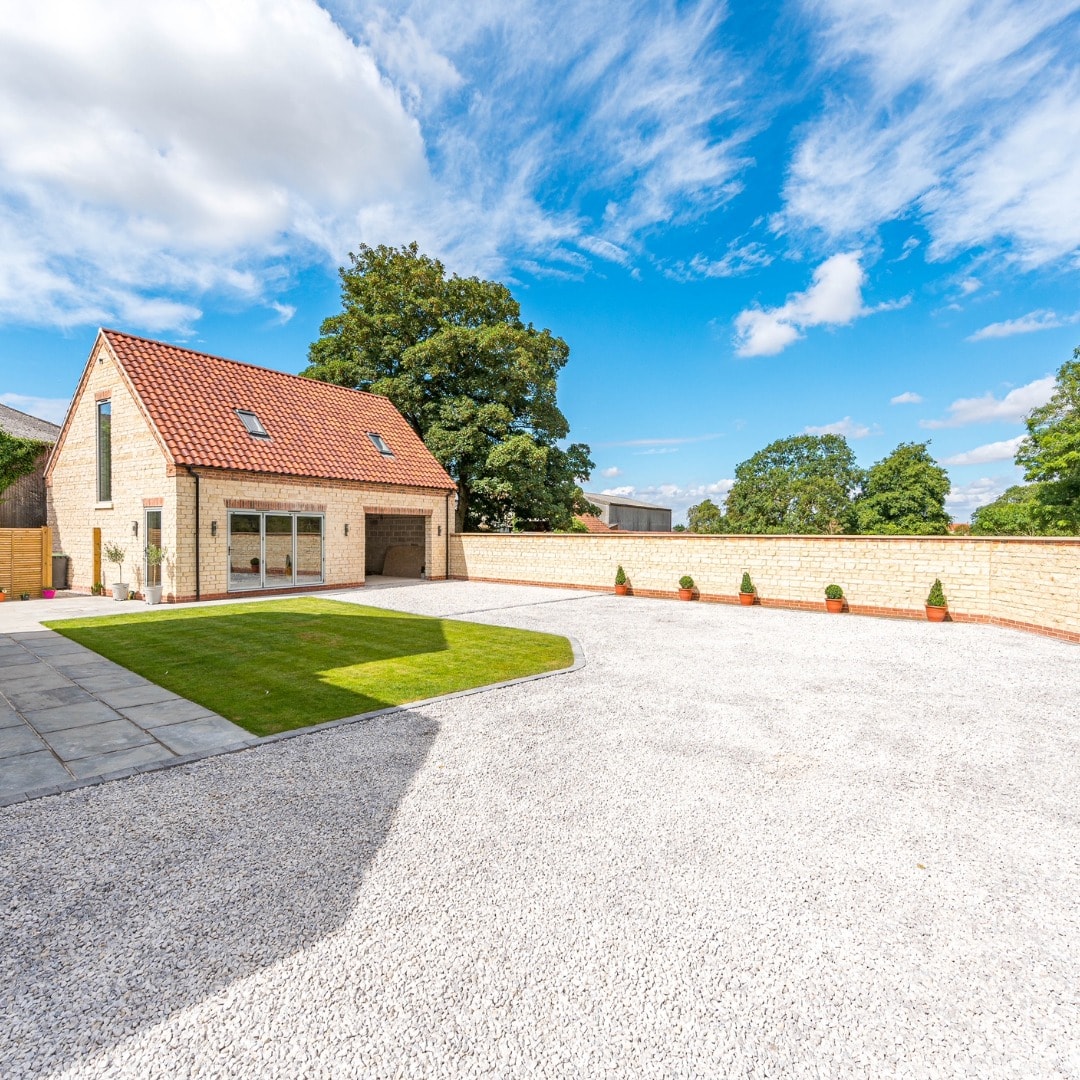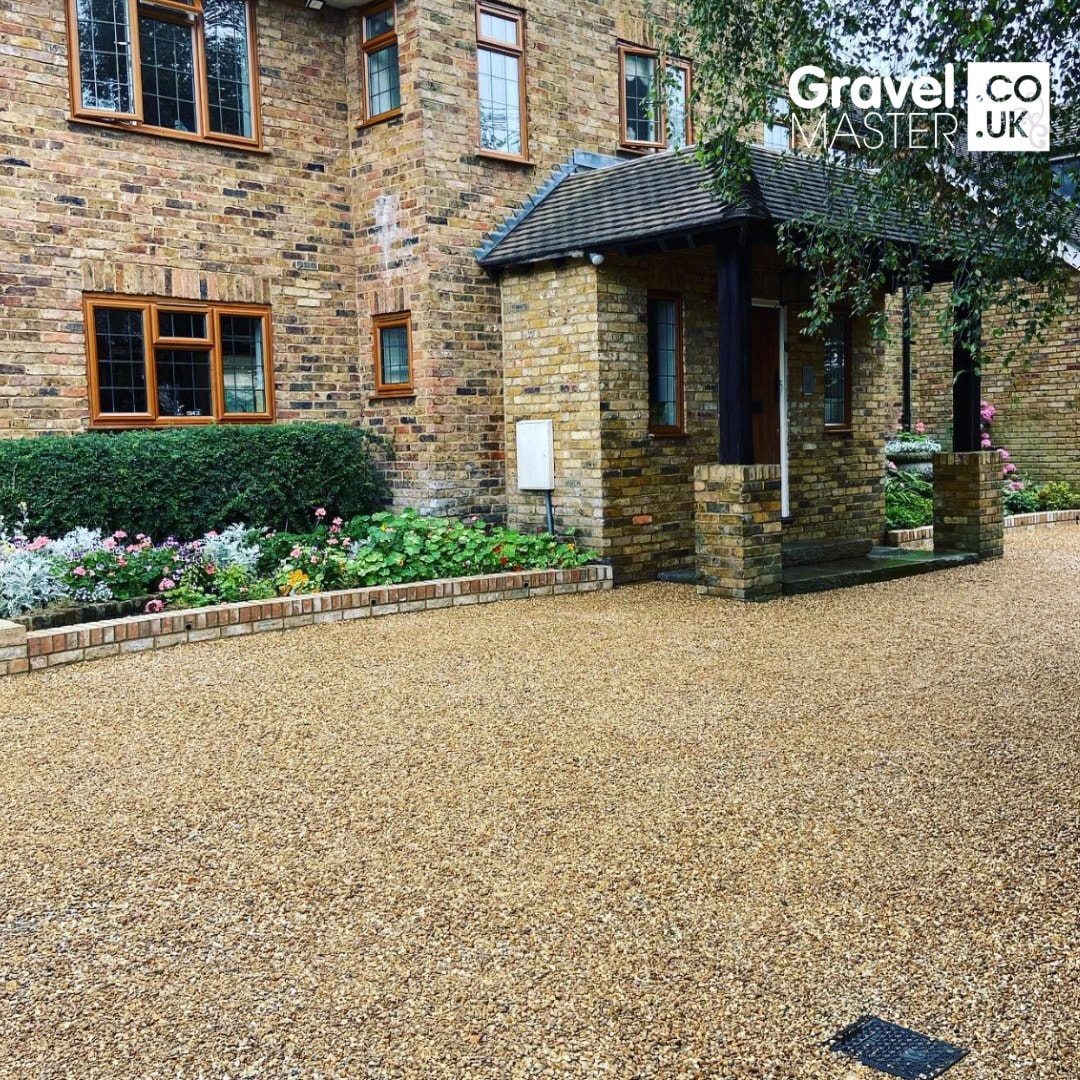How To Lay A Gravel Driveway
.png)
Over the past 10 years gravel driveways have become extremely popular in the UK and are a fantastic alternative to slabs or block paving. Gravel driveways allow you to get creative and can create a wonderful feature at the front of your home.
You may think that laying a new gravel driveway is a daunting task, however, if you have the correct equipment and tools, it can be a fairly simple task.
There is always the option of hiring an expert, but for those more DIY-minded, this guide offers some handy tips on how to lay a gravel driveway as well as making sure you have the correct materials.

Materials Checklist
- MOT type 1 (crusher run) for the base of the driveway
- Weed control membrane to keep your driveway weed-free
- Decorative gravel to lay on the driveway
5 Steps To Lay A Gravel Driveway
- Choose your preferred gravel
- Prepare the ground of the driveway
- Level the surface + pack the driveway
- Lay weed control membrane
- Lay the gravel driveway
1. Choose your preferred gravel
Before beginning any work, you need to decide what style of gravel you want to use for your driveway. You’ll also need to decide how much gravel you’ll need by measuring your driveway area and entering these measurements into our handy gravel calculator.
This is an important step as the style of gravel you choose can affect the overall look and feel of your driveway, so it’s important to select a gravel that looks attractive to you, as well as complements the appearance of your property.
2. Prepare the ground of the driveway
Remove any existing turf or slabs that are present so that you’re able to freely dig the driveway down to a depth of around 200mm. This is important as it allows you to install both the sub-base and the gravel for the driveway at the recommended depths.
3. Level the surface + pack the driveway
Once you’ve dug out the ground of the driveway, it’s time to install your sub-base. This is done by laying MOT Type 1 (also known as 40mm crusher run) to a depth of 150mm and then compacting down using a wacker plate or heavy duty roller.
This sub-base will not only ensure the driveway is level, but also is vital for ensuring the surface doesn’t sink under the heavy loads of parked vehicles. We recommend installing the base with a very slight slope away from your house, to ensure that water runs off in the right direction.
4. Lay weed control membrane
A thick layer of weed control membrane help to prevent weeds from piercing through and ruining the look of your driveway and should be placed directly below the gravel.
We recommend heavy duty weed membrane, as it’s really important it lasts for a long time and stops any weeds coming through – You don’t want to be relaying your membrane every year!
Edging the weed membrane with bricks is not necessary on this project as the gravel will weigh it down naturally.
5. Lay the gravel onto the driveway
Once all the preparation has been completed, you can lay your chosen gravel onto the driveway and begin to spread the gravel evenly across the driveway to at least a depth of 40mm.
Finally, your new driveway is complete and ready to use, all that’s left to do is pull the cars back on!

Benefits Of A Gravel Driveway
Gravel driveways not only allow you more customisation for your driveway, with a range of styles and colours, but they also significantly reduce the risk of flooding unlike standard block paved or slabbed driveways. The water is able to filter through your gravel and into the ground therefore creating a clear surface that is safe to use all year round.
As a general rule of thumb, 1 bulk bag of gravel will cover approximately 12m² at a depth of 40mm. However we’d always recommend measuring your driveway and then using our gravel calculator to get the exact amount needed.
Recommended Gravel For Driveways
Our experts at Gravel Master would recommend a 20mm gravel type for all driveways, this is because this size is easy to walk on, can stand the weight of car tyres and won’t be scattered around. A 10mm gravel may get stuck in the tyre treads of your vehicles and any aggregate larger than 20mm will become difficult to walk on.
With that in mind, here are our 4 favourite 20mm gravels for your new driveway:
Cotswold Chippings
Cotswold chippings have a wonderful cream/buff colour are currently the most popular type of chipping in the UK. Their neutral tone will seamlessly blend into your current landscape.
Golden Gravel
Golden gravel is a stunning gravel that combines creams, golds and yellows. This gravel type will offer a modern and stylish look to your property and shine on a driveway that gets lots of sun.
Moonstone Gravel
Moonstone gravel is hardwearing gravel, making it ideal for gravel driveways. The gravel is made up of a mixture of colours and can really help brighten up your driveway as well as your property!
Flamenco Gravel
Flamenco gravel is another colourful gravel made up of pink, white and grey. Flamenco gravel is a very fun style and can help revive any dull-looking driveway and create a welcoming feel to your home.

Gravel Driveway FAQs
Can I lay gravel on an uneven surface?
We'd recommend ensuring your sub-base is a solid base and the entire area is as flat as possible, this will make it easier to lay your chosen gravel on top and spread it to reduce bumps and lumps in your finished area.
How do I keep my gravel driveway neat?
One way of keeping your gravel driveway neat and tidy is to use gravel driveway edging which ensures there's no loose gravel that can escape the boundaries of the drive. You can use concrete edging as well as timber edging depending on the style of your property.
If you want to control the top layer of gravel without using edging, we'd recommend using gravel grids which also stop gravel being dispersed around as vehicles come in and out of the driveway.
How do I clean my gravel driveway?
There are two main jobs to keep on top of when you have a gravel driveway. Firstly, raking the driveway gravel fairly regularly ensures that the entire surface stays even. Secondly, even the highest quality weed prevention membrane will reduce in effectiveness over time, so sporadic weeding of the gravel driveway may be required once the drive has been laid for a while.
We'd Love to See Your Gravel Driveways
If this guide has made the job of laying gravel on your new driveway any easier, we'd love to see the results!
Send a picture of your own gravel driveway and we'll be sure share it on our Facebook, Instagram and Pinterest pages.




